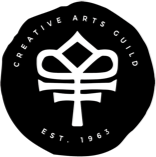An Introduction to the Alexander Technique
-
Date:
March 31, 2017
- Time: 10:00 am - 12:00 pm
- Location: Creative Arts Guild, 520 W. Waugh Street, Main Gallery
The Creative Arts Guild and Dalton State will present an introductory session on the Alexander Technique on Friday, March 31st, 10am-12pm, led by Dr. Lillian Pearson, a visiting artist from North Carolina.
The class is open to the public, and admission is $10 ($5 for any student). All are welcome!
The class will be held at the Creative Arts Guild's main facility at 520 West Waugh Street in the Main Gallery.
Bring a yoga mat if you have one, or a towel. We’re likely to be sitting or lying on the floor for some portion of the class. We will have a few yoga mats to share.
You may know that Alexander is widely studied by musicians and actors to improve their performance.
Here is more information from the American Society for the Alexander Technique
What is the Alexander Technique?
The Alexander Technique is an educational method used worldwide for well over 100 years. By teaching how to change faulty postural habits, it enables improved mobility, posture, performance and alertness along with relief of chronic stiffness, tension and stress.
Why do people study the Alexander Technique?
People study the Technique for a variety of reasons. The most common is to relieve pain through learning better coordination of the musculoskeletal system.
Another reason people take lessons in the Alexander Technique is to enhance performance. Athletes, singers, dancers, and musicians use the Technique to improve breathing, vocal production, and speed and accuracy of movement.
The most far-reaching reason people study the Technique is to achieve greater conscious control of their reactions.
Most of us have many habitual patterns of tension, learned both consciously and unconsciously. These patterns can be unlearned, enabling the possibility of new choices in posture, movement and reaction. During lessons you'll develop awareness of habits that interfere with your natural coordination. You'll learn how to undo these patterns and develop the ability to consciously redirect your whole self into an optimal state of being and functioning. Through direct experience you’ll learn how to go about your daily activities with increasingly greater ease and less effort.
Pianist, Lillian Buss Pearson, has appeared throughout the continental United States, England, Costa Rica and China as a soloist and collaborative artist. She is also certified as a teacher of the Alexander Technique. Dr. Pearson holds degrees from Florida State University and the University of Illinois, her principal teacher being the Hungarian trained pianist Edward Kilenyi. Her interest in historically informed performance practice has led her also to study harpsichord and fortepiano.
Lillian is the official pianist at the International Flute Festival in Costa Rica where she has performed the past five years. In October, 2008 she appeared in Weill Recital Hall, NYC, in a concert of four international flutists. On numerous occasions she has had opportunity to collaborate with internationally known artists. Pearson’s solo orchestral appearances include performances with the Jacksonville Symphony (FL), the Asheville Symphony (NC), the Breckenridge Festival Orchestra (CO), the Western Carolina Civic Orchestra (NC), the National Chamber Players (NC), and the Brandenburg Ensemble (FL). For many years she was a member of the Breckenridge Music Festival and the Cullowhee Summer Music Festival. She has served as an accompanist for many conferences and workshops.
Dr. Pearson has actively pursued training in Alexander Technique for over 15 years, including a sabbatical leave in 1997 to study in England with Nelly Ben-Or, pianist and teacher of the Alexander Technique and member of the faculty at the Guildhall School of Music and Drama. Lillian is now certified as a teacher of the Alexander Technique. She is especially interested in the integration of Alexander Technique with musical performance.
F.M. Alexander, was an actor who lived in the late 1800s, who suffered from voice loss. Mr. Alexander was enjoying a fruitful career as a performer until encountering chronic vocal problems, including frequent loss of voice. He sought medical as well as educational help, but to no avail. The best advice recommended to him was vocal rest for two weeks. However even after not speaking for the duration of time, when he went to perform he lost his voice again. We can imagine how frustrating this must have been.
Alexander decided to find a solution on his own. He set up mirrors to observe himself speaking. After a long and patient process, he noticed that whenever he went to speak he would pull his head back and down on his spine, putting unnecessary strain on his larynx. This habit was clearly at the root of his problem.
He was then faced with the dilemma of how to break such a deeply intrenched habit. In the years that followed he devoted himself to this question, and the Alexander Technique is the result of that process. It has been used for the last hundred years to help thousands of people to un-do habits of a lifetime and return to health, wellness and ease of motion.

